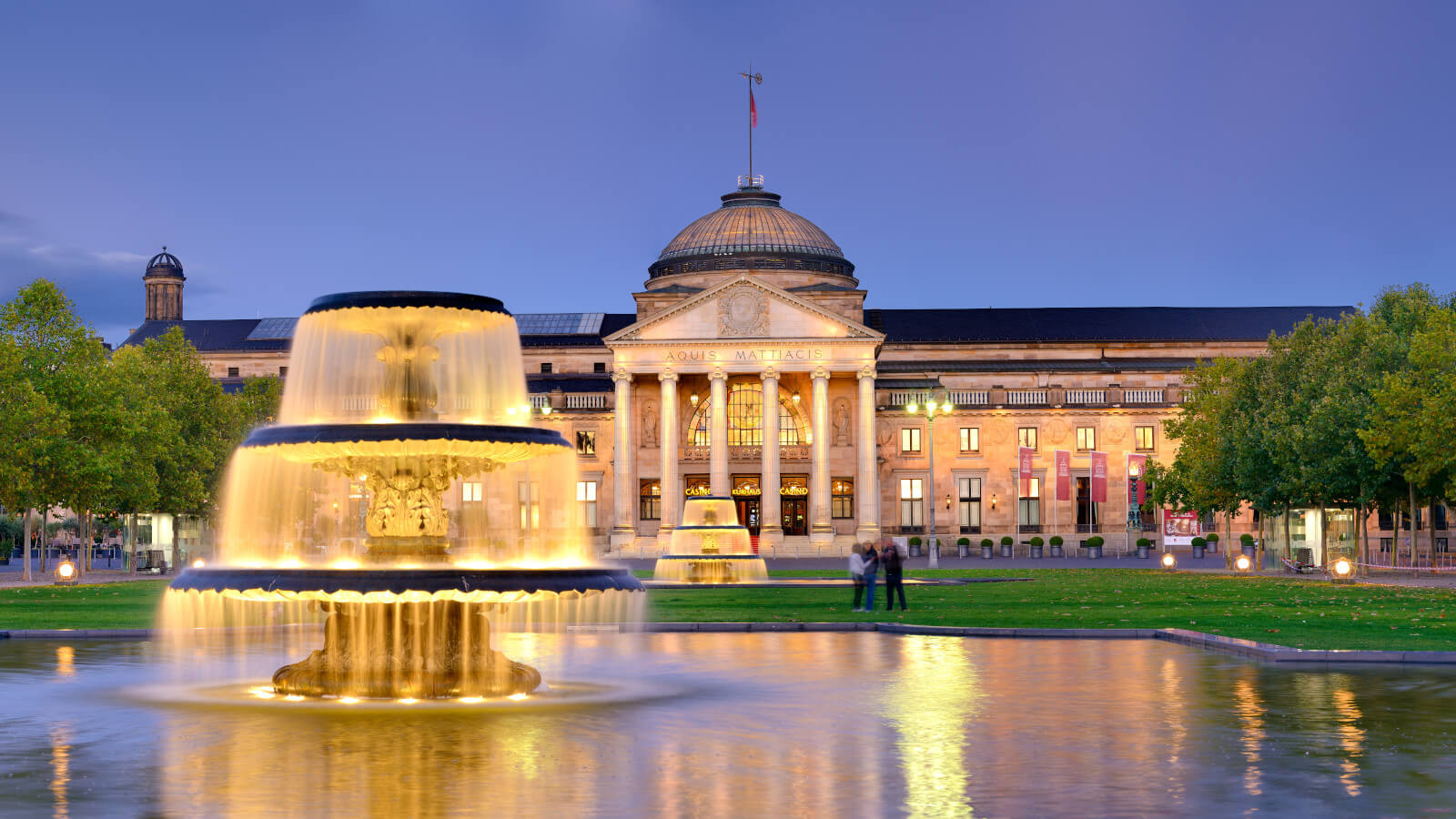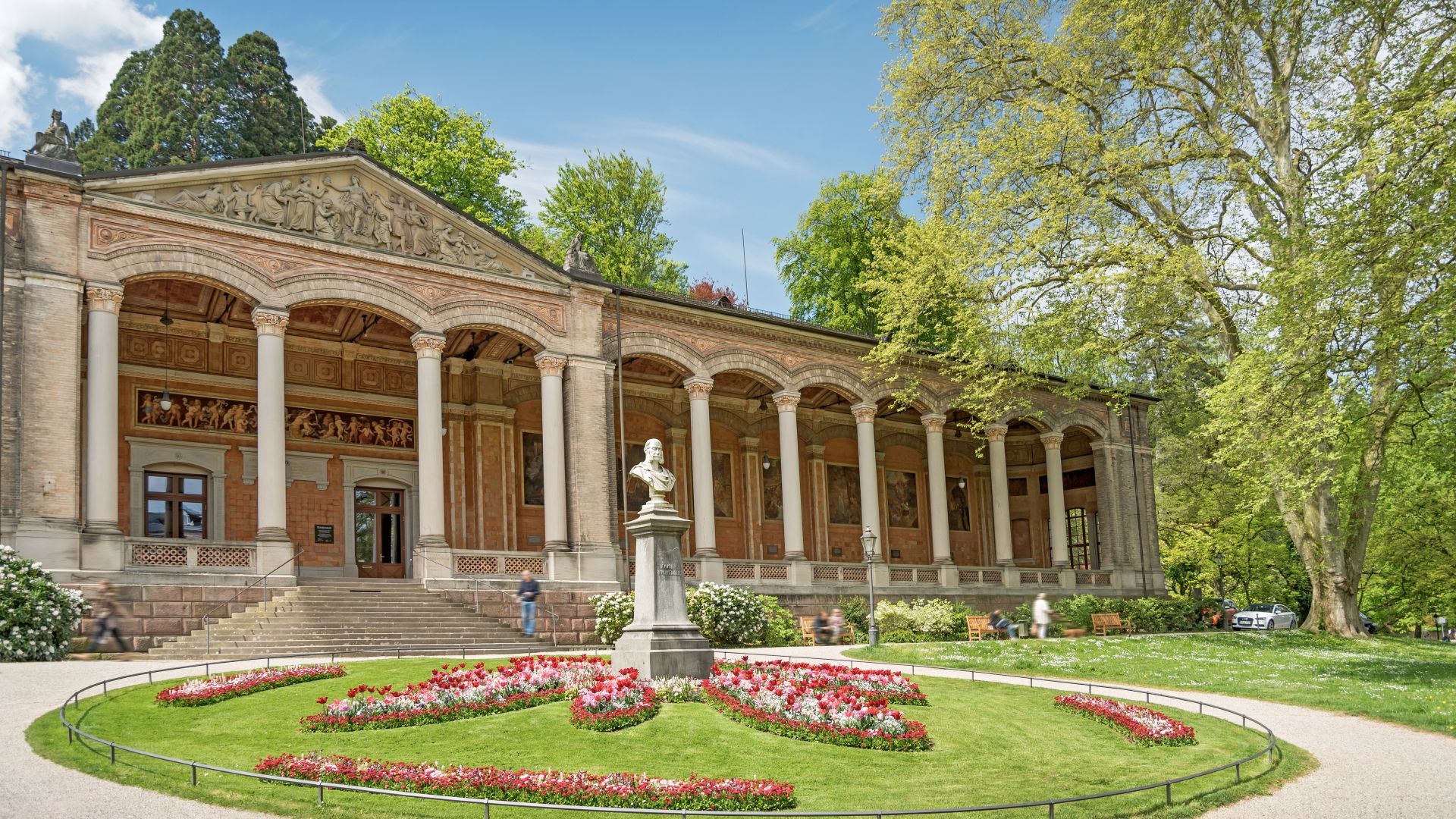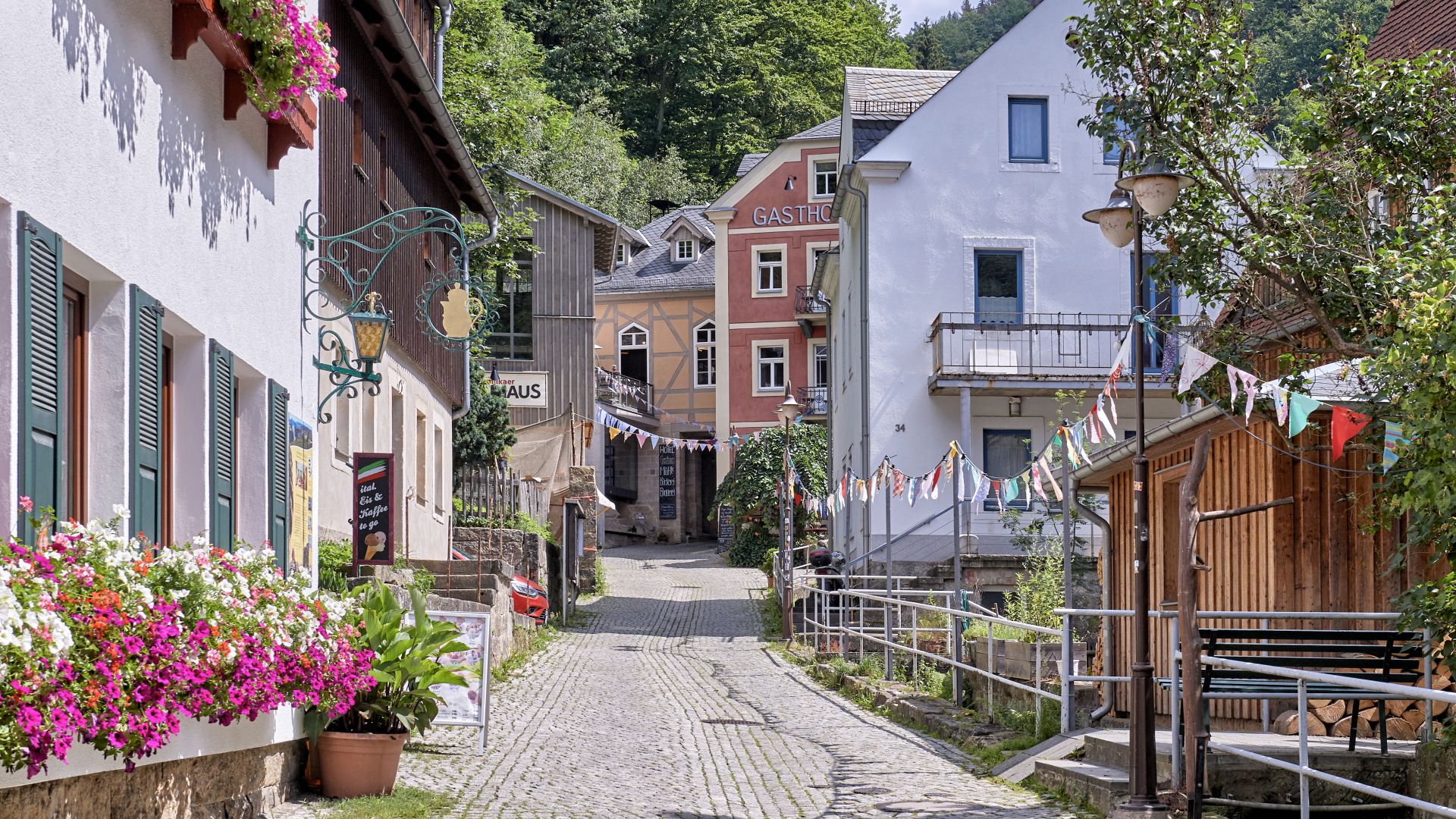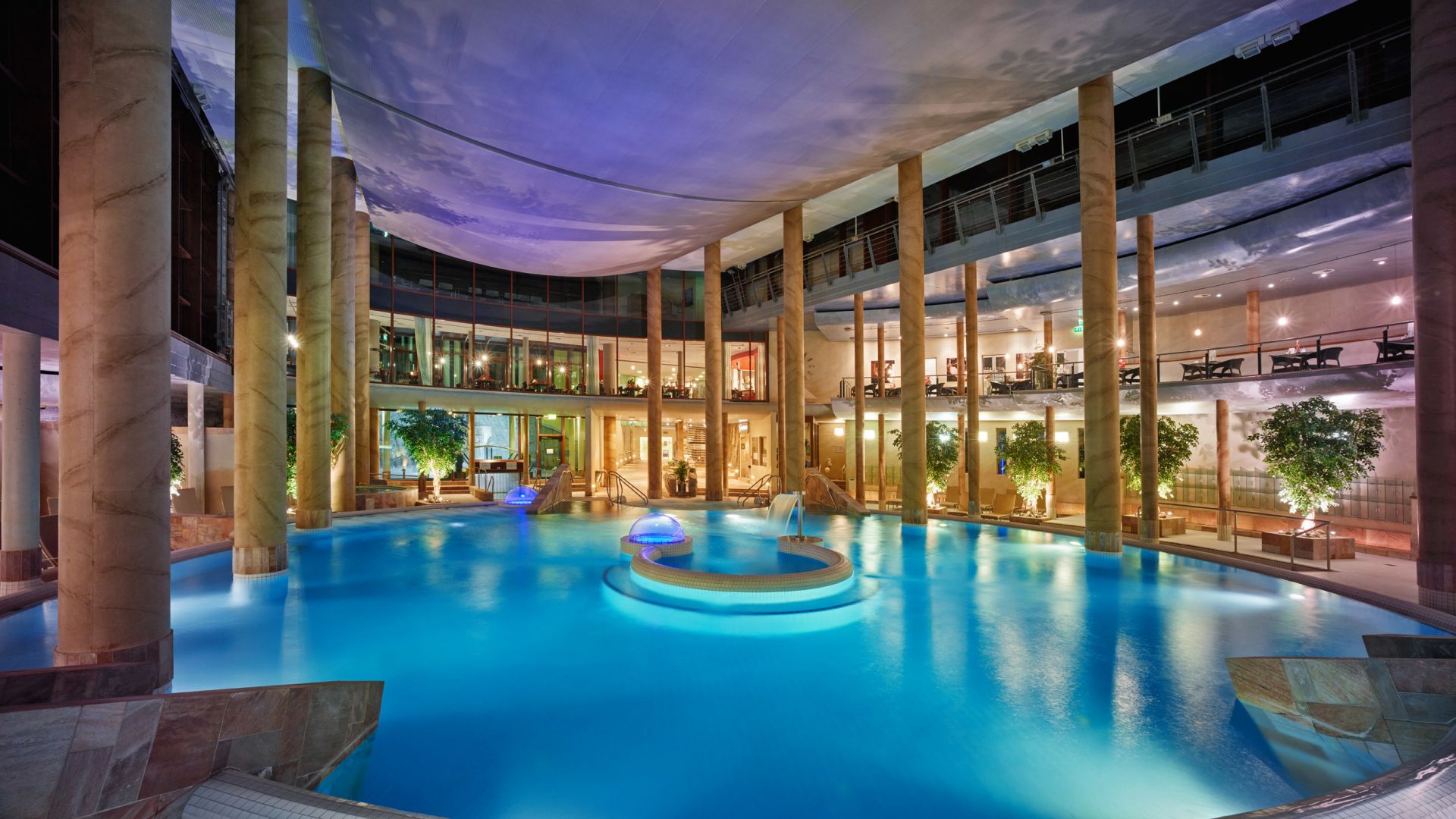Cities & Culture
Spa towns: a spa trip is a must
Tsars, princes, great poets – they all loved the public baths. The fascination for spas continues to this day. After all, in some cities you are immersed not only in mineral-rich pools of water, but also in a glorious history, even outside the spa buildings.
Wiesbaden: a cosmopolitan spa town with a taste for the temporal
 Wiesbaden: Kurhaus am Abend
©DZT (Francesco Carovillano)
Wiesbaden: Kurhaus am Abend
©DZT (Francesco Carovillano)
A wellness getaway just like in the time of the emperor: the Kaiser-Friedrich-Therme makes it possible. Thanks to extensive modernisation, these Art Nouveau baths, which opened in 1913, are still a gem among German bathing resorts. People have been bathing and enjoying spa treatments in opulent settings in Hesse's state capital for a long, long time. In the 19th century, it even earned the title of "world spa resort" – and the nickname "Nice of the North". In addition to the architecture in the city centre (you can't miss the five-towered, neo-Gothic Marktkirche), the Hessian State Theatre and the neighbouring Kurhaus also bear witness to the golden age. The exterior of the 129-metre-long columned hall is the longest in Europe, the interior is home to the noble casino, behind it are the spa gardens ( the magnolia blossoms are fantastic) and in front of it, the bowling green. Sometimes superstars, the likes of Herbert Grönemeyer or Plácido Domingo, get the party started there. A cascade fountain provides cooling, even beyond the open-air events.
Baden-Baden: excellence in spa culture
 Baden-Baden: Trinkhalle building with garden
©Baden-Baden Kur & Tourismus GmbH
Baden-Baden: Trinkhalle building with garden
©Baden-Baden Kur & Tourismus GmbH
Together with Bad Kissingen and Bad Ems, Baden-Baden is one of the three German and overall eleven European spas honoured by UNESCO in 2021 with the World Heritage title of "Great Spa Towns of Europe". Located on the edge of the Black Forest, the town's spa tradition is based on the up to 2,000 metre deep thermal springs. The Romans historically found relief from joint pain there, and even more so the (political) celebrities of the 19th century. Dostoevsky, Tsar Nicholas and Bismarck all wandered through the park to the Kurhaus with its striking columned front. It is also home to one of the oldest casinos in the country. A stroll through the alleyways of the Old Town, to the magnificent villas, and up the Michaelsberg is always a great idea. When visiting the theatre, and the second largest concert hall in Europe, don't just content yourself with an external view – delve deeper. This applies all the more to the warm pools in the Friedrichsbad and the Caracalla thermal baths.
Bad Schandau: healing springs in the Elbe Sandstone Mountains
 Schmilka: Old town
©DZT (Florian Trykowski)
Schmilka: Old town
©DZT (Florian Trykowski)
The region southeast of Dresden is very popular with holiday makers. And it's no wonder: along the Elbe, which can be travelled in style on the world's oldest and largest fleet of paddle steamers, one highlight follows the next: Pillnitz Palace, Pirna, the Bastei Bridge, Königstein Fortress, and the state-approved Kneipp spa resort of Bad Schandau right on the Czech border. Within a small area, you will find top clinics, (Kneipp) spa facilities and the spa park, where the venerable Kirnitzschtalbahn (Kirnitzsch Valley Railway) departs for the Lichtenhain waterfall. In the medieval Old Town, the Saxon Switzerland National Park Centre offers fascinating insights into the nearby protected area - where interaction is a top priority. This prepares you perfectly to see the towering and exciting rocks of the Elbe Sandstone Mountains (a must-see: the Schrammsteine) in person while hiking, climbing or cycling. Relaxing regeneration is guaranteed at the Tuscany Spa in Bad Schandau, with its saunas and warm baths.
Aachen: always first, and not only alphabetically so
 Aachen: Carolus Therme
©Carolus Thermen Bad Aachen (Olaf Rohl)
Aachen: Carolus Therme
©Carolus Thermen Bad Aachen (Olaf Rohl)
In the wake of the Celts and Germanic tribes, the Romans were particularly fond of the "Aquae granni". With their impressive bathing facilities around the hot springs, they also founded Germany's most westerly city (which only omits the addition of the word "spa" from its name so that it always ranks first in listings!) Charlemagne then provided a boost to urban development, the legacy of which is still visible today. Ongoing over many weeks he visited the spas, and even made Aachen the centre of his empire. Europe's bathing celebrities also left their mark over the centuries, from King Frederick the Great to Napoleon. Nowadays, apart from the spa guests, students of the RWTH University of Excellence and visitors with an interest in culture also favour coming here. Ranked at the top of their watch list are the historic town hall, the neo-classical Elisenbrunnen fountain and, above all, the cathedral, including the cathedral shrine, which - another first for Aachen - was the first German cultural monument to be included on the UNESCO World Heritage List in 1978.